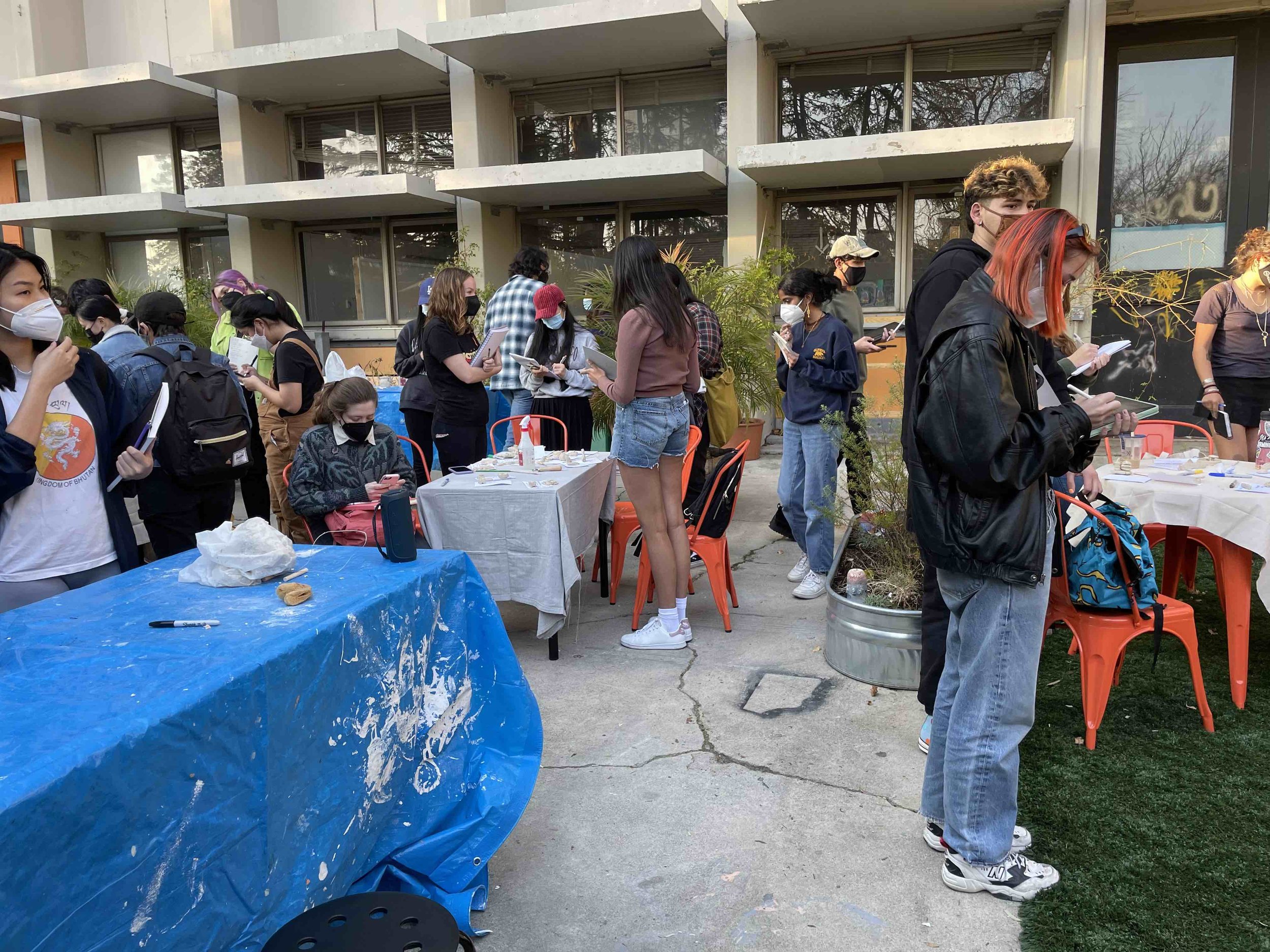
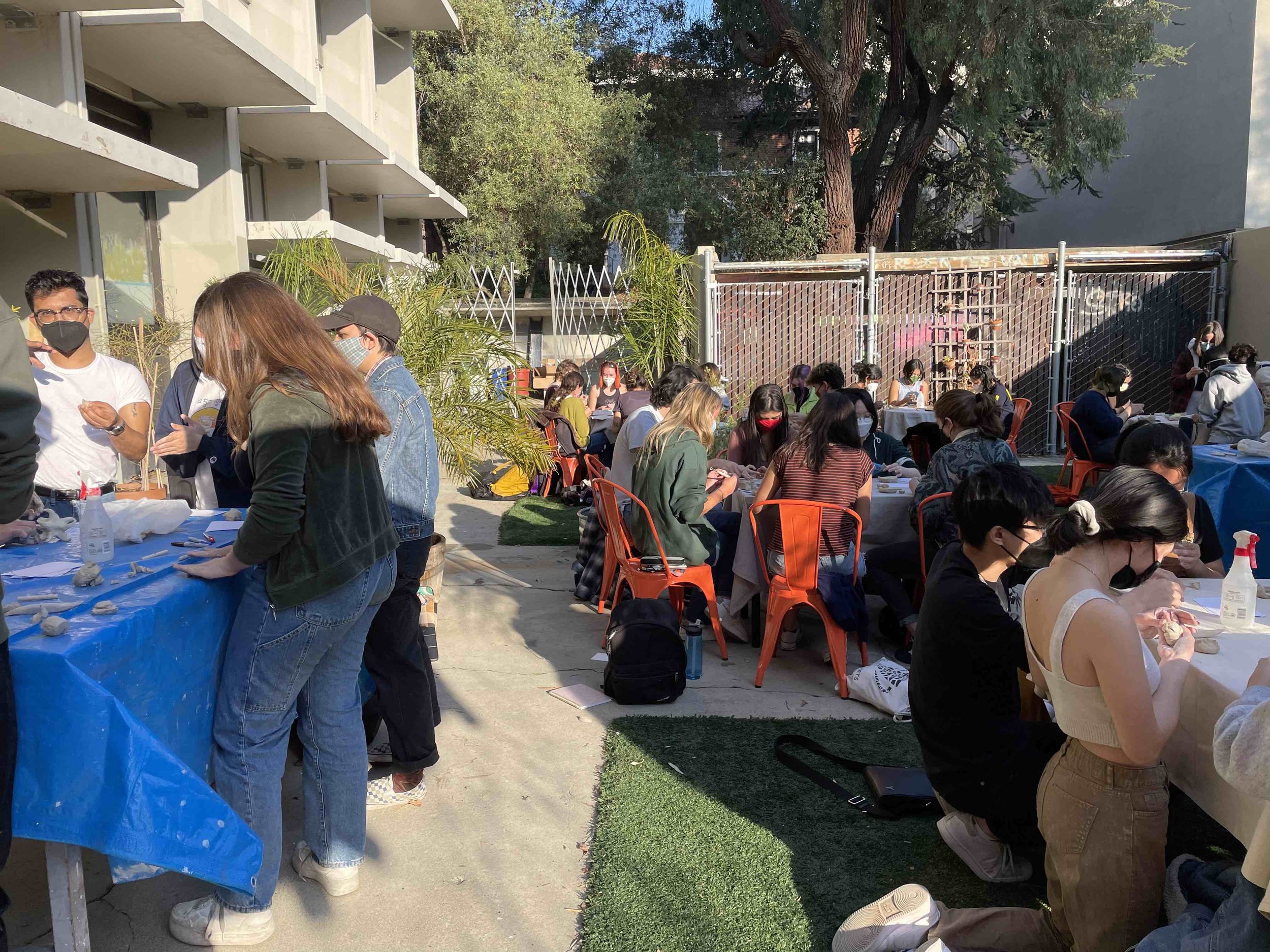
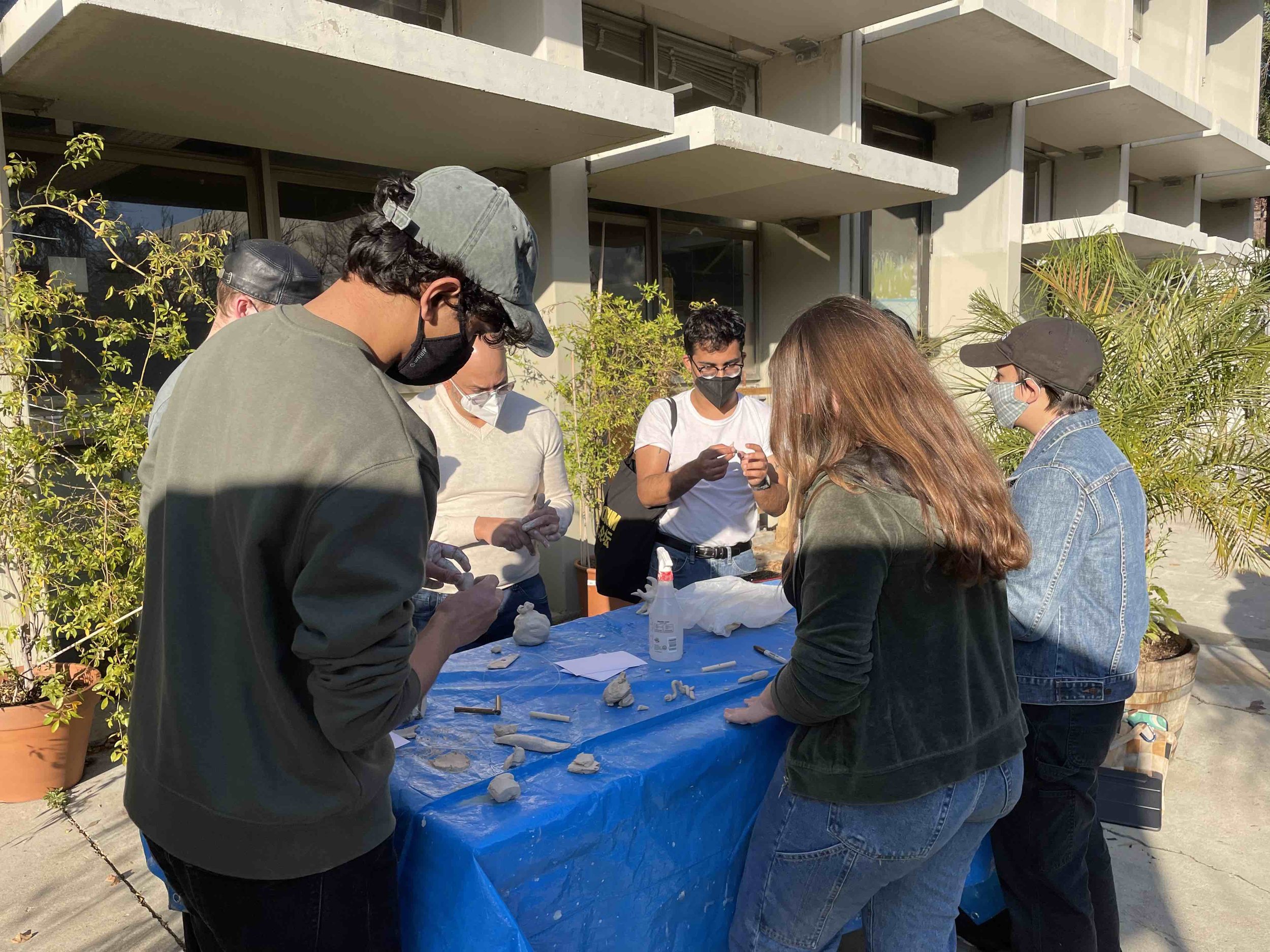
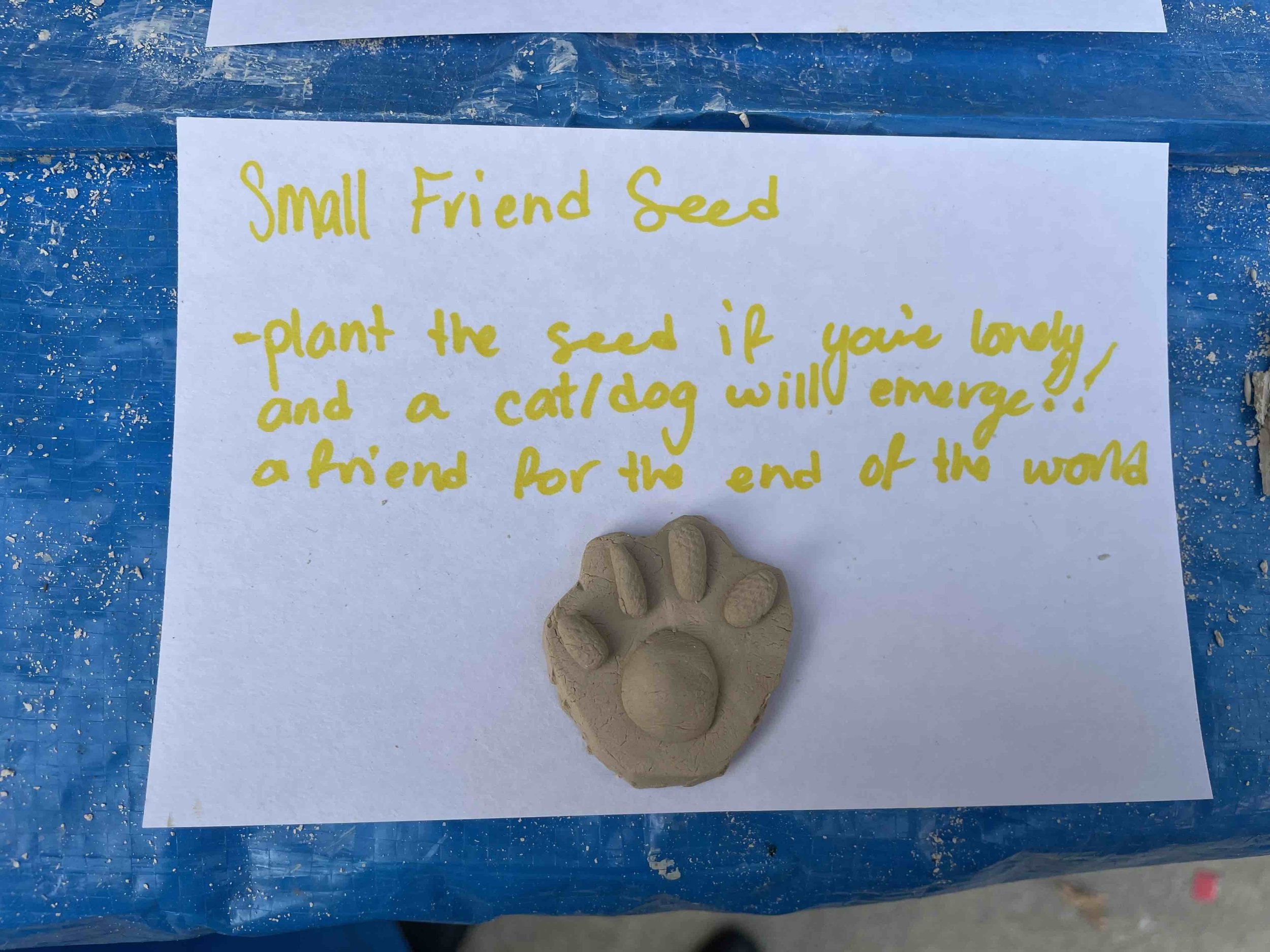
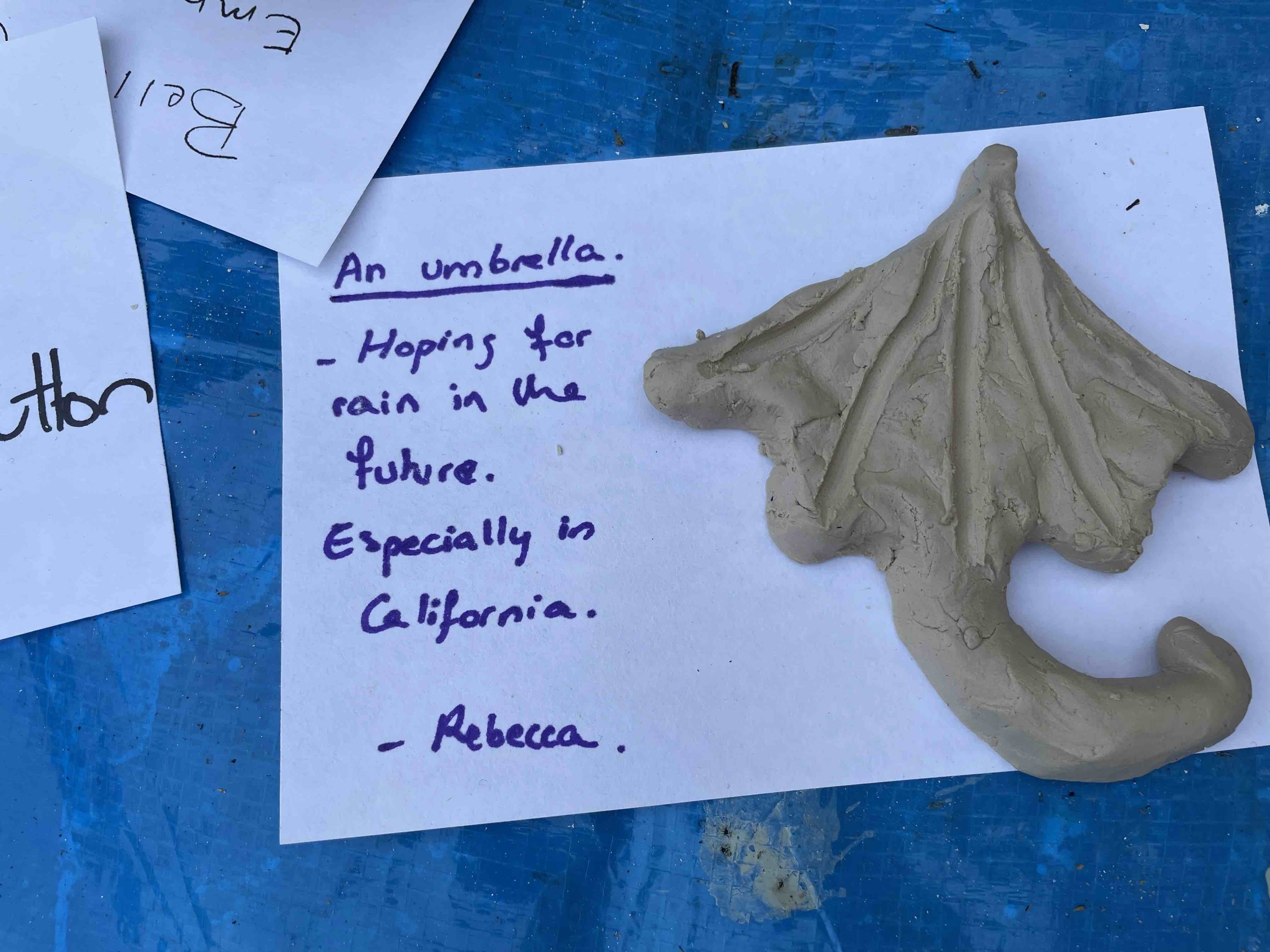
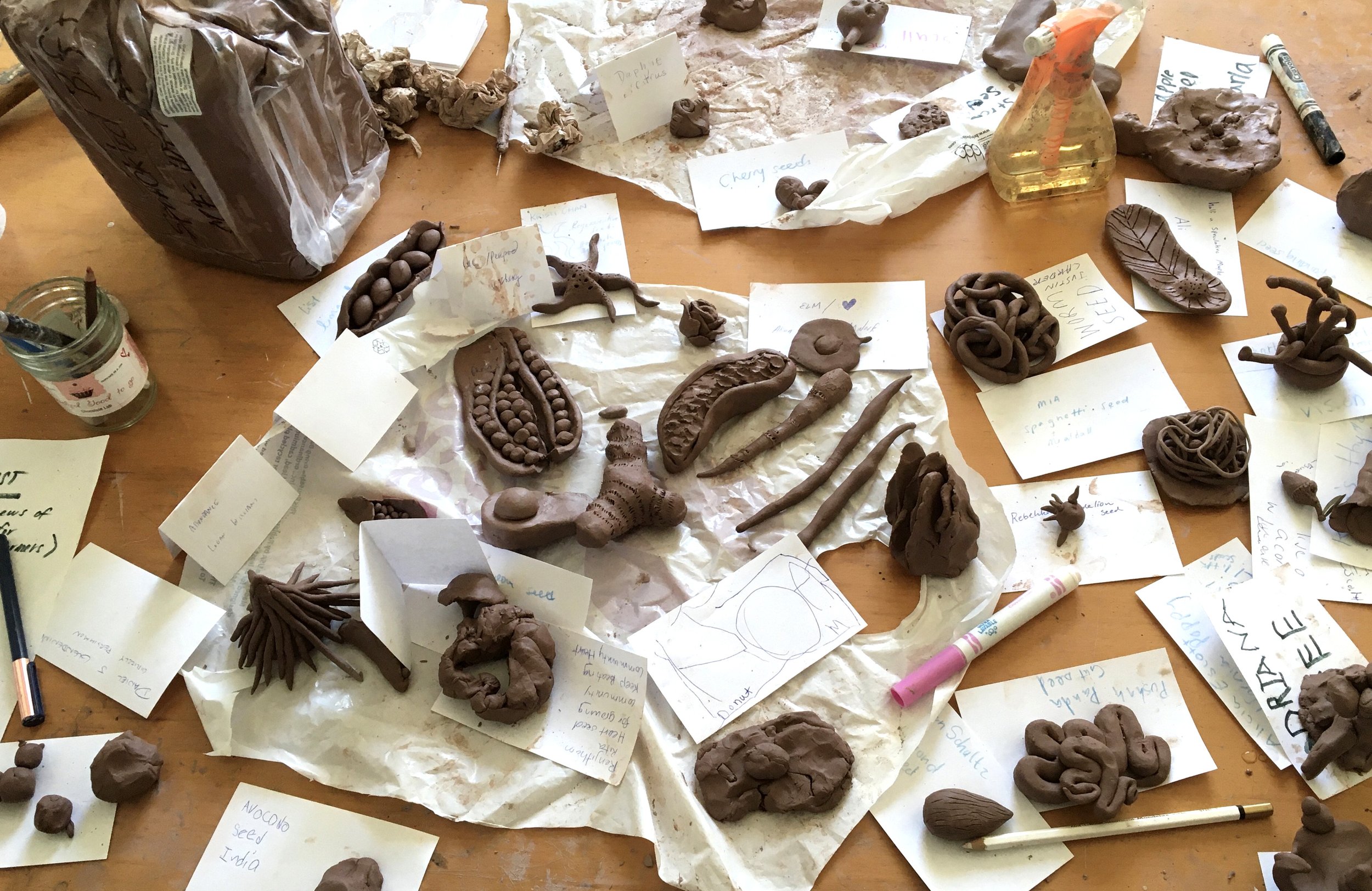
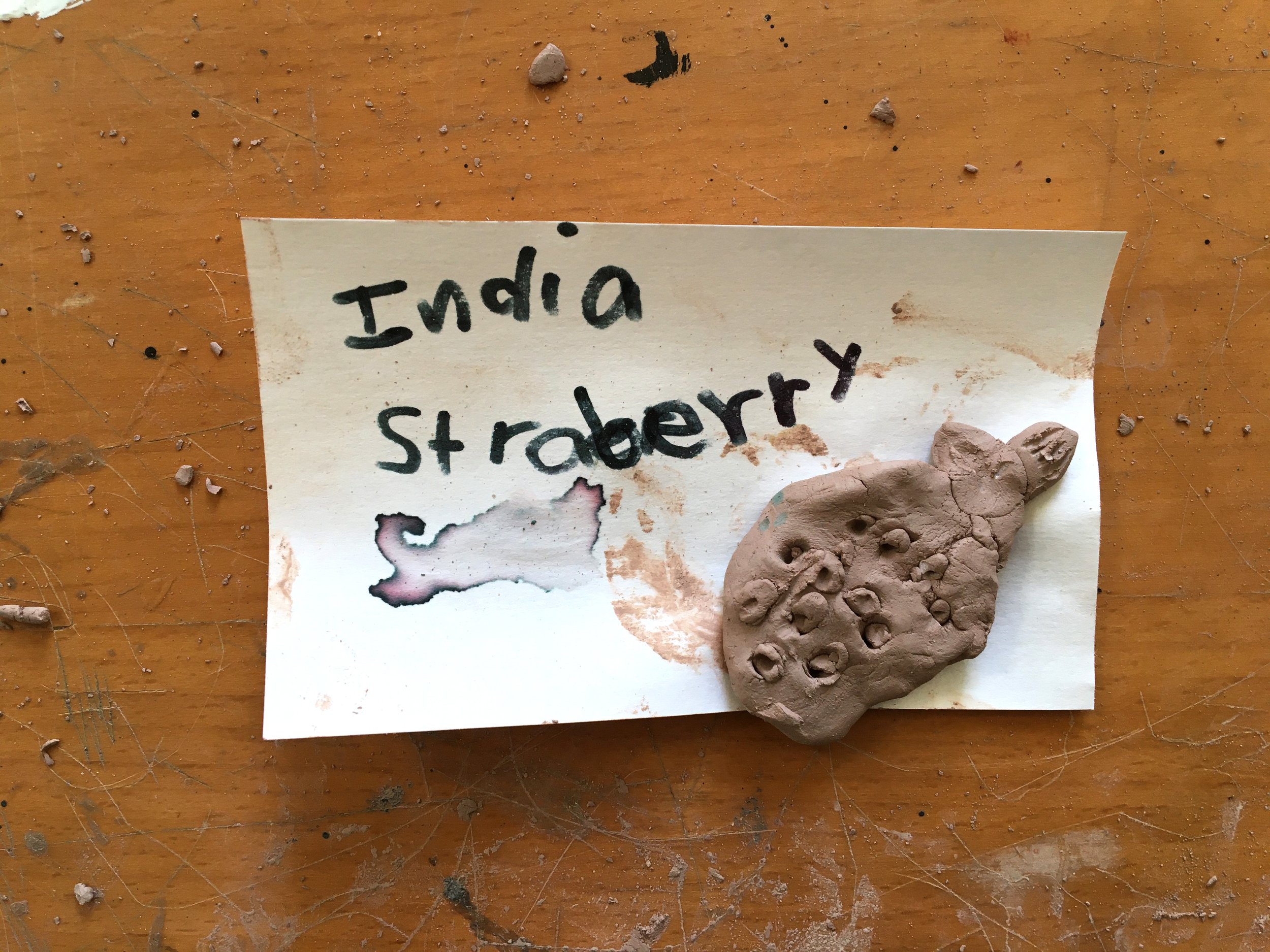

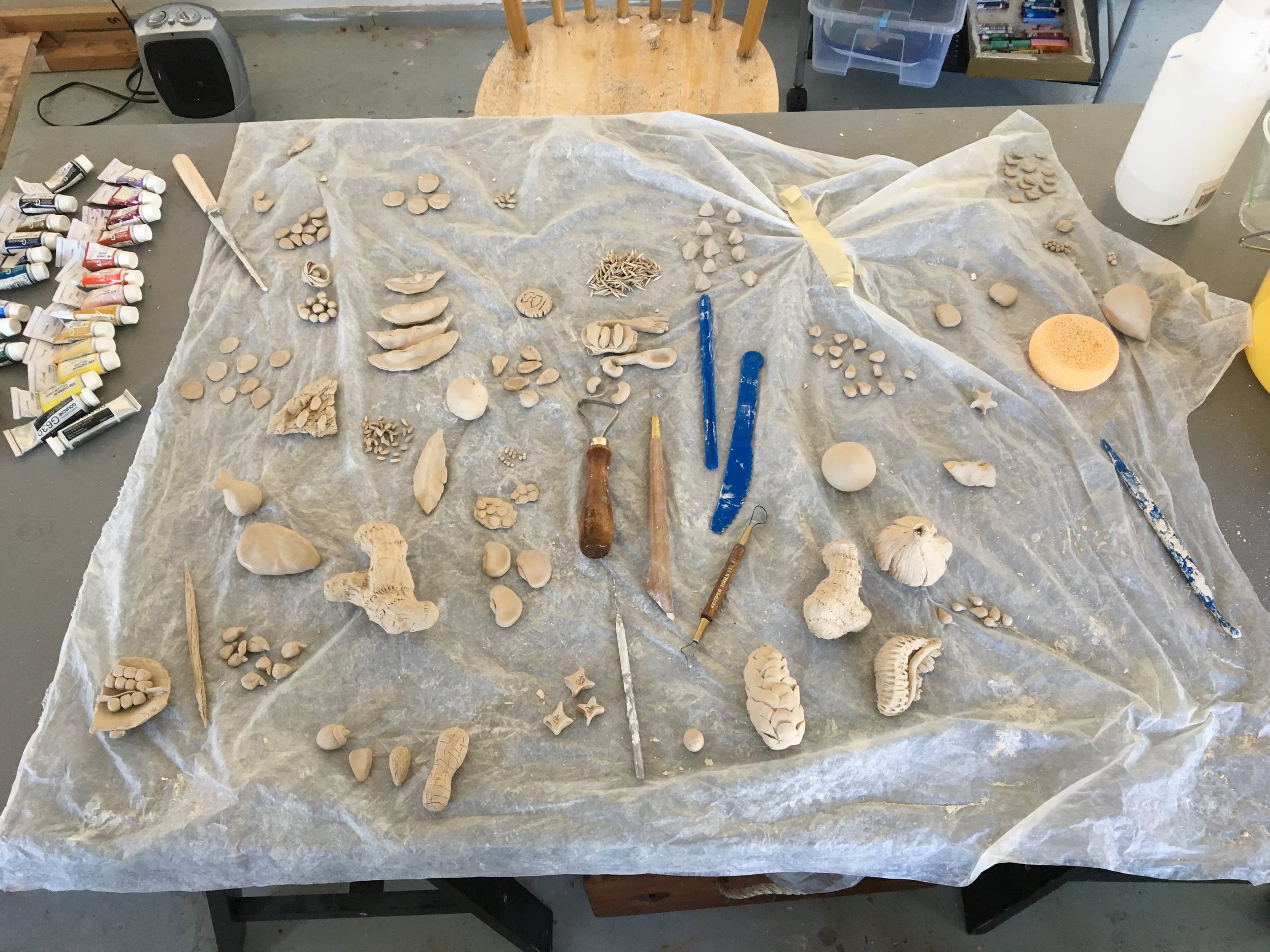

Seed almanac (documentation), 2019 — ongoing. Ceramic seeds made in collaboration; dimensions variable. Photographs from workshops at UC Berkeley (2019, 2022) and the Headlands Center for the Arts (2019). All photographs by Connie Zheng; ceramic seeds courtesy of their makers.
Seed Almanac is an ongoing “seed-making” workshop I have been facilitating since 2019. In this workshop, I ask participants to make seeds out of clay with me, in response to the prompt: “If you could have any seeds with you at the end of this world — or the beginning of a new one — what would they be?” Sub-prompts include invitations to create seeds for people you love, seeds for people you hate, and seeds of things you’d like to have 10 years from now. Seeds you wished were real, and seeds for things in danger of disappearing. People have made all sorts of incredible seeds, and the more impossible they seem, the better. Why can’t we have a debt cancellation berry, or a seed for universal healthcare? The point of this workshop is not to foster magical thinking, but to invite participants to reimagine the things that our neoliberal society has demanded are impossible, and to reframe them instead as things that are ultimately growable or can be cultivated.
I have been documenting and compiling these seeds – over 200 so far – as part of an ongoing speculative seed catalogue that also contains drawings, short fiction, and poems. More information and images are forthcoming.
So far, I have facilitated this workshop at: the Headlands Center for the Arts (2019), the University of California — Berkeley (2019, 2022), California Polytechnic State University — San Luis Obispo, the Minnesota Street Project, the Asian Art Museum, and the University of San Francisco. If you are interested in bringing Seed Almanac to a classroom, art space, exhibition, festival, etc., please don’t hesitate to reach out! I sometimes also use the workshop as a pedagogical tool for teaching folks about food histories and alternative economic systems and am interested in potentially developing the project as an open-source curriculum for other educators. If you are interested in working together on this, please let me know as well.